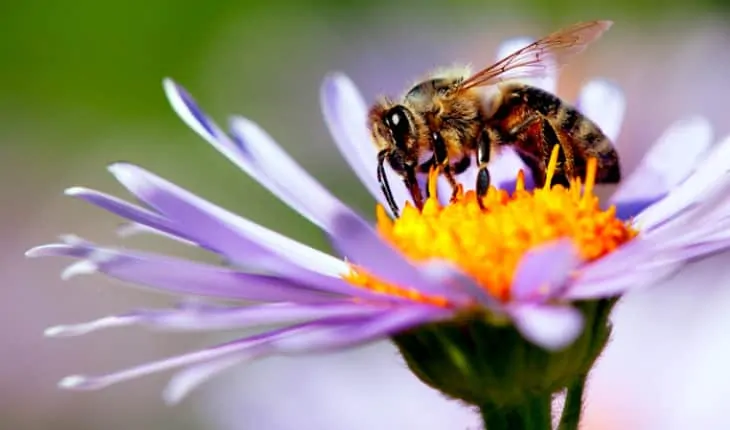Everyone has suffered from those incredibly itchy bites and stings that keep you awake at night. Although some people may seem more susceptible to bites, others may have spectacular and occasionally life-threatening reactions.
This guide gives you a general overview as to what might have got you and suggestions as to the best way to treat the bites and stings to make them more bearable and less of an ordeal.
What Are Your First Steps?
First things first, no matter how tempting it is, please don’t scratch the bite.
Once the skin has been broken the bite is far more likely to become infected. The first sign your bite is becoming infected is likely to be that it gets redder, hot and more itchy. If this is the case, get it seen by a health professional as soon as possible. If the redness tracks away from the bite and spreads across the skin, this could be a sign of cellulitis, which is serious and you should get medical treatment quickly.
Reactions
Anyone can react to a sting.
Usually it is only a local reaction, just affecting the bite or sting itself. If the person who has been stung experiences a local reaction, apply a wrapped ice pack to the affected area and this will help to reduce the swelling and can reduce pain as well.
Antihistamines (Pills or Topical Creams) will also help reduce the reaction and will treat itching and swelling. If you are in pain, you can take paracetamol or ibuprofen to manage it.
Anaphylaxis
If the casualty shows any signs of a systemic reaction or of anaphylactic shock, call an ambulance immediately. Use their Adrenaline Auto-Injector or Epipen if they have one. Remain calm, reassure them and position them appropriately: If they are struggling to breathe, they should sit in an upright position. Putting something under their knees to help increase their circulation can be helpful – into the lazy W position.
The Lazy W Position
If their breathing is unaffected, but are feeling weak, dizzy, sick and thirsty or showing signs of shock should lie down with their legs raised to help increase the circulation to their vital organs. They should stay lying down even if they appear to recover, as sitting or standing up could cause a further drop in their blood pressure. Encourage them to turn their head to one side if they are likely to vomit. Cover them to stay warm and keep in this position until the paramedics arrive.
Bee and Wasp Stings
Bees and wasps are not generally aggressive and don’t look to sting people, however it is extremely common for people to accidentally step on them in bare feet, or for them to fly into us and then sting. When bees or wasps sting a person, they inject venom through their stinger into the skin of the victim.
Wasps, hornets and other stinging insects have stingers without barbs that they retract when they sting, so these insects can sting people multiple times. Bees have a barbed stinger that they leave in the victim’s skin along with the venom sack so they cannot sting twice.
Symptoms:
Most people only experience a localised reaction to bee stings. This area around the skin is red and painful. About 3% of people stung by bees and wasps have an allergic reaction to the sting, and up to 0.8% of bee sting victims experience the severe and life-threatening allergic reaction known as anaphylaxis – this requires urgent medical intervention as detailed above.
What to do:
If someone is stung by a bee and the sting remains in the skin, quickly flick it out using your thumb nail or a credit card. Try not to squeeze the sting as this can increase the amount of allergen entering the body and therefore increase any possible allergic reaction. The venom sac can take 2-3 minutes to release the venom and so removing the sac promptly can prevent further venom increasing the reaction.
Old Wives’ Tales:
Old wives’ tales suggest neutralising stings with vinegar or bicarbonate of soda (depending on the source) is an effective remedy for wasp or bee stings. They claim that:
- Wasp sting venom is more alkaline and the remedy is neutralising the sting with vinegar to reduce the pain.
- Bee sting venom is predominantly formic acidic so they advise bicarbonate of soda to neutralise it.
Neither of these remedies have any scientific backing and it is more likely to be the power of suggestion than any real benefit that might make people feel better.
To make sure you know what to do and what is the right information, consider our Essential First Aid Course.
Ticks
Ticks are arachnids that live in woodland and grassy areas. They are blood sucking and bite into the skin to feed on blood. Initially they are extremely small, but swell as they eat, eventually becoming pea sized and therefore easier to spot and remove.
You are unlikely to know immediately that you have been bitten as Tick bites do not hurt.
How to spot and remove ticks
This section follows advice from NHS England, which can be found here.
- Use fine-tipped tweezers or a tick-removal tool. You can buy these from some pharmacies, vets and pet shops
- Grasp the tick as close to the skin as possible
- Slowly pull upwards, taking care not to squeeze or crush the tick. Dispose of it when you have removed it
- Clean the bite with antiseptic or soap and water
You don’t need to do anything else unless you notice a rash or become unwell.
Never burn the tick off or try and use chemicals to kill it.
Keep the tick in a container to show to the health professionals so they can ensure has been removed entirely. Cover up with long trousers and socks when walking in woodland and long grass and always check yourself, your clothes and your dog for ticks upon your return.
Lyme Disease in Humans:
Bull’s eye type rash associated with Lyme Disease
Not all ticks carry the bacteria that causes Lyme disease, however it’s still important to be aware of them and how to safely remove them as soon as possible.
Lyme disease is a serious illness in humans, characterised by flu like symptoms, lethargy and aches and pains. 50% of people with Lyme disease develop a classic bulls eye type rash, which can appear on any part of the body. If a doctor can diagnose and treat Lyme Disease quickly, it is possible to make a full recovery. However, otherwise it can cause paralysis, arthritis, meningitis and severe long-term problems.
Lyme disease also very much affects dogs. To learn more, click here.
Chiggers
Chiggers are mites that are commonly found on meadows, golf courses, woodlands, parks and in grassland around lakes and rivers.
They are members of the Trombiculidae family and are tiny mite like spiders. They are known as berry bugs, red bugs or harvest mites.
Symptoms:
- Intense itching
- Flat or raised red bumps on the skin
- Bumps can sometimes appear blistered
Antihistamines and topical anti-bite and sting relief creams can help manage the itching.
Chiggers most commonly bite areas of thinned skin such as wrinkles and warm folds of skin such as the crotch and groin areas, armpits, and behind the knees. The ankles and calves are also common sites for chigger bites. When the chigger bites, it inserts its feeding structures and mouth parts into the skin. They inject enzymes into the host skin that destroy the tissue around the bite and it is these that frequently provoke reactions. The area around the bite then hardens, and they insert a feeding tube, called a sylostome, further into the bite area. They can feed on the skin through this structure for a few days if they aren’t removed.
Mosquito bites
What bit me? the ultimate guide to common bites and stings
Most of us are familiar with the tell-tale buzz of the mosquito and well aware of the look of these pesky vampiric pests. Unfortunately, we do get them in the UK and our increasingly warm summers are leading to a surge in numbers. Mosquitos feed on human blood and furthermore, they can also carry malaria, dengue fever, Japanese encephalitis and many more extremely serious diseases.
Mosquitos love stagnant water and breed prolifically when the conditions are right. Only female mosquitos bite humans as females need blood in their diet to reproduce. Male mosquitos have feathery antennae that help them sense the presence of female mosquitos but the males only live for about a week. Females have less bushy antennae and can live for a few months. Female mosquitos have long, tubular mouthparts that they use to pierce your skin and feed on your blood. When they bite you, they inject saliva into your body while suctioning your blood.
Symptoms:
Mosquito saliva contains proteins that most people react to causing a red and itchy bump.
How to Avoid Being Bitten:
Mosquitos sniff their victims out and choose them based on their scent. Many mosquito repellents try to change our smell to make us less appetising to the mosquitoes. You can get patches and sprays and people also say eating large amounts of Marmite can make you less appealing to the bugs.
Ideally use a high quality, insect repellent and cover up with loose fitting, long sleeved clothes and long trousers. Some mosquitos are around more in the daytime, some at dawn and dusk. Deet based insect repellents are widely seen as the most effective.
What to do if Bitten:
Wash mosquito bites and stings with soap and warm water. Antihistamine tablets and topical creams, anti-itch creams and applying an ice pack to the bites should provide relief from itching. Avoid scratching the bites.
It is rare for anyone to have a severe allergic or anaphylactic reaction to a mosquito bite. Therefore, if you develop aching, headaches, or fever after a bite, contact your doctor. These are more likely to be symptoms of a mosquito-borne disease.
Ants
The most common ant in the UK, the black garden variety, does not sting or bite. However, red ants, wood ants and flying ants sometimes do.
Ant bites and stings are generally harmless, although you’ll probably feel a nip and a pale pink mark may develop on your skin. Sometimes the bitten area may be painful, itchy and swollen.
Spiders
Bites from spiders in the UK are rare, but some native spiders – such as the false widow spider – are capable of giving a nasty bite.
Symptoms:
- Spider bites leave small puncture marks on the skin
- They can be painful and cause redness and swelling
- Some spider’s bites can cause you to feel or be sick, sweating and dizzines
- Bites can also become infected or cause a severe allergic reaction in rare cases. Get medical help immediately if you have any severe or worrying symptoms after a spider bite.
Bed Bugs
Bedbugs are small, oval, brown insects that feed on the blood of animals and humans. Adult bedbugs have flat bodies about the size of an apple seed. After feeding, though, they swell and turn a reddish color.
Signs of bed bugs:
Usually you won’t spot bed bugs around the house, so it’s difficult to know whether a bed bug has bitten you, or a spider or mosquito. If there are bed bugs in your home, you may spot:
- spots of blood on your bedding – this could be from their bites or from rolling over and squashing them
- small brown spots around the home – their poo
Symptoms:
- Bedbug bites typically occur on the face, neck, hands or arms
- They’re typically found in straight lines across the skin. They’re usually in clusters of three to five bites
- The bites are not usually painful, and if you’ve not been bitten by bedbugs before, you may not have any symptoms
- If you have been bitten before, you may develop itchy red bumps that can last for several days
- On white skin, the bites will appear red, however on darker skin they may look purple and be harder to spot
Treatment
Bed bugs usually go away by themselves in a week or two, but there are things you can do at home to reduce irritation:
- putting a cool, wet cloth on the bites can ease the irritation and itchiness
- keeping the area clean using soap and water reduces the risk of infection
- resisting the urge to scratch the bites, because this increases the risk of infection
It is always best to see a medical professional. A pharmacist may be able to prescribe a steroid cream, or antihistamines.
Fleas
Fleas are minute, irritating insects, that like to feed on our blood and that of our pets. They are a real nuisance and their bites are itchy and sometimes painful. Getting rid of fleas is hard and requires professional pest control treatment for total eradication. Pet owners are most at risk of flea infestations, however, it is possible to have fleas in your home without pets.
Fleas are tiny jumping bugs, that are extremely fast breeders.
Symptoms:
- Fleabites are distinctive small, red bumps with a red “halo” around the bite centre
- Bites usually occur in groups of three or four, or in a straight line
Fleas like warm moist areas such as the waist, armpits, breasts, groin, or in the folds of the elbows and knees. However, they also nibble the easy to reach areas such as ankles and calves
Fleabites are incredibly itchy, the skin around each bite can be sore or painful and you might develop a rash or hives near the site of a bite. Scratching the bites is very likely to lead to infection.
- 7 Proven Hangover Cures and First Aid for Alcohol Poisoning - 2nd January 2026
- What is a seizure? - 13th March 2025
- Febrile Convulsions and Seizures in Children - 13th March 2025







